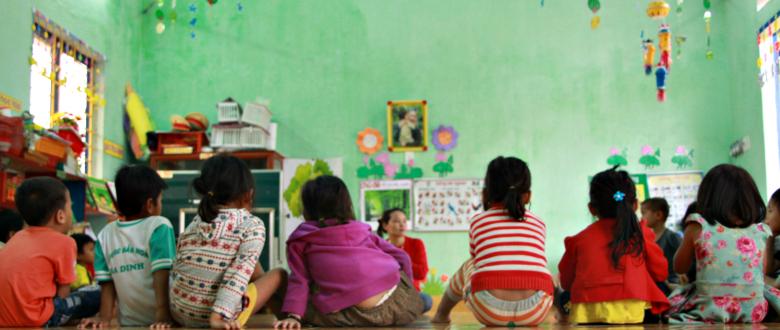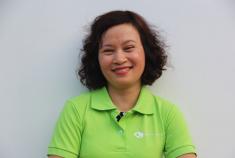
In the mountainous regions of central Vietnam, different ethnic minorities coexist. Preschool classes are often made up of children from multiple ethnic groups. VVOB works on a five-year programme with the provincial educational authorities of three provinces of central Vietnam, to support teachers in teaching such diverse groups. Using a tool called ‘process-oriented child monitoring’, they reflect on their teaching practice to identify which children are (at risk of) not learning, and adapt their approaches to include all children. Trần Thị Kim Lý, education advisor at VVOB Vietnam, explains more in detail how the programme aims at improving quality preschool education for all by focusing on the most vulnerable children.
Trần Thị Kim Lý, education advisor at VVOB Vietnam

Children from ethnic minorities
The current programme focuses on mitigating preschool children’s barriers to learning in disadvantaged and ethnically diverse districts. Who are these children and why are they vulnerable?
65 per cent of the children reached by the programme are from ethnic minority groups. The programme intervenes in remote mountainous areas, where most people live in difficult conditions. These rural regions are prone to natural disasters, people live far away from public facilities and in difficult economic conditions. Children in some of the most remote areas sometimes can’t even access preschools. They go to a “satellite” class that is part of the school but closer to their home and that caters to the children in the area, of diverse ages - between 3 and 5 - and ethnic origins. In that sense, children of those regions are vulnerable in many ways, and those of ethnic minorities even more so. Having a different culture and speaking a different language often means additional challenges. Our intervention aims at supporting the teachers to work with that diversity.
Diversity: an asset
What are the possible barriers that prevent children from learning? How does the programme help mitigate them?
There are many barriers to learning. Our situation analysis of the provinces of Quang Nam, Quang Ngai and Kon Tum highlighted three main types: those related to gender, to environment, and to ethnic diversity.
Regarding the last barrier type, most preschool teachers are from the Kinh majority and speak Vietnamese. Communication between them and the children of other ethnicities can be very challenging due to the lack of common language. The programme focuses on school-based and needs-based teacher professional development to tackle this issue. The approach that is introduced, ‘process-oriented child monitoring’, helps teachers find ways to deal with the communication challenges, and even take advantage of te multi-lingual context. Rather than seeing the differences of ethnicity as a barrier, they learn to see it as an asset and to adapt their teaching to diversity. They use this process-oriented tool to reflect on their practice and guide them in finding appropriate solutions to their specific contexts.
Miscommunication
Thinking of all your visits to preschools, what experience has struck you particularly?
During one visit to a preschool, children were role playing. Two girls were pretending to be sellers: one Kinh child owned a vegetable shop and the other child, a young girl from an ethnic minority, owned a garage. The latter child looked bored. No one came to her garage, while a lot of kids were buying vegetables. She tried to talk to the teacher, who didn’t pay attention. Either because the teacher was talking to the vegetables seller, because the little girl spoke her own mother tongue or too quietly, or for another reason… The child looked sad as she could not communicate with her teacher and the other children during that activity.
Quality education for all
Imagine it’s 2030 and SDG 4 has been achieved in Vietnam. How will preschools have changed?
Quality early childhood education would be provided to all children in Vietnam, by capable teachers who understand the children's needs. They would know how to address the barriers to the children’s learning, so that all children can develop holistically, especially the most vulnerable ones. It would be the result of the nationwide application of the process-oriented child monitoring approach adopted by the Ministry of Education and Training in all preschools in Vietnam.




